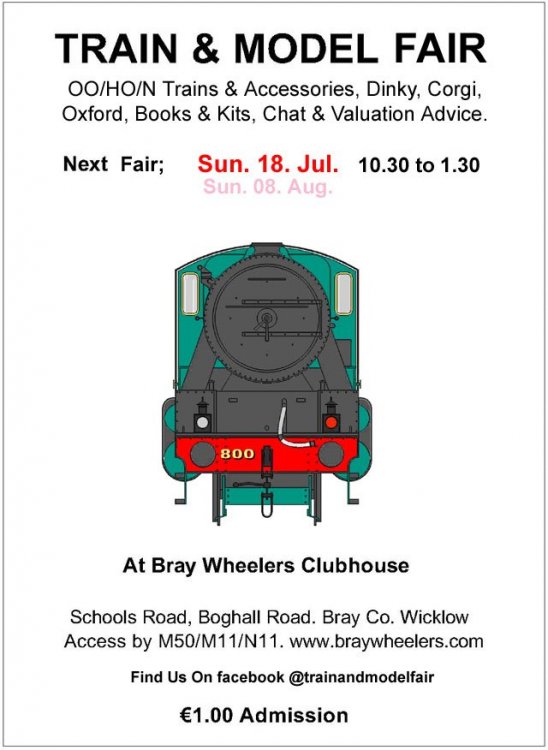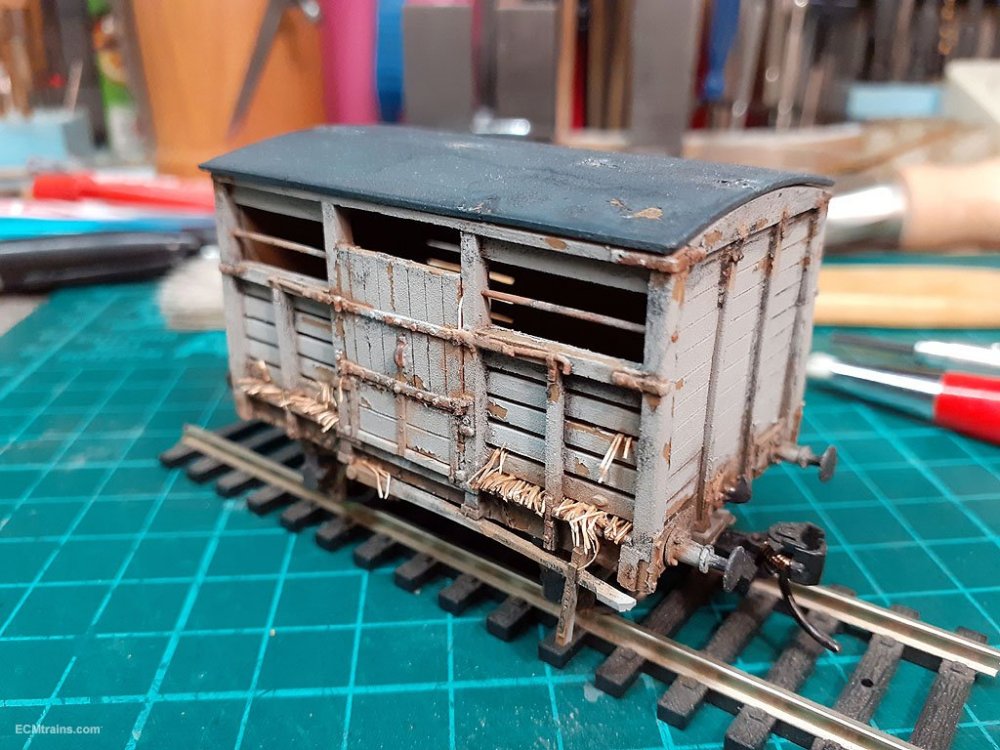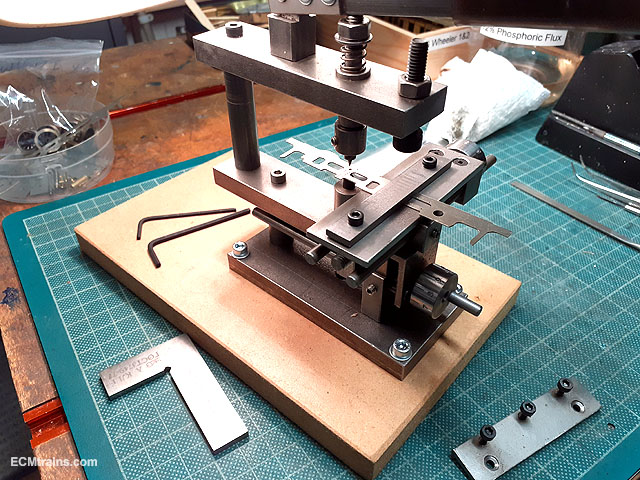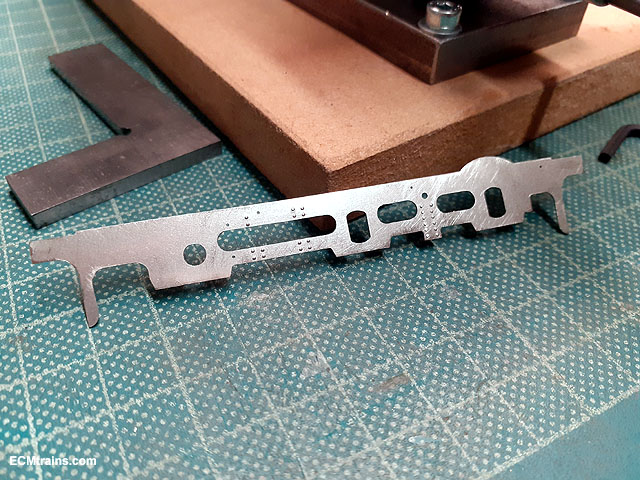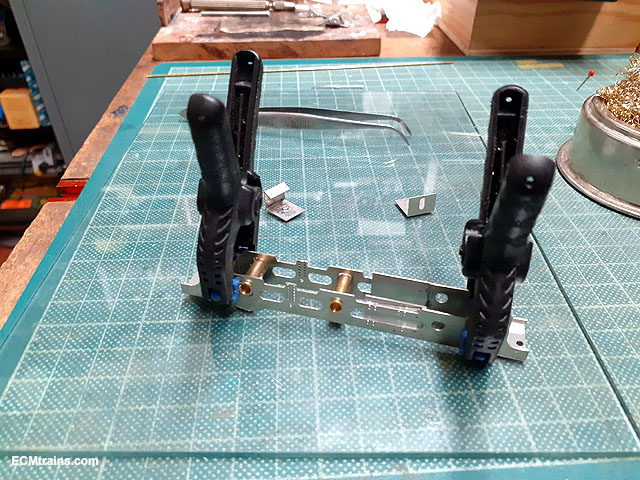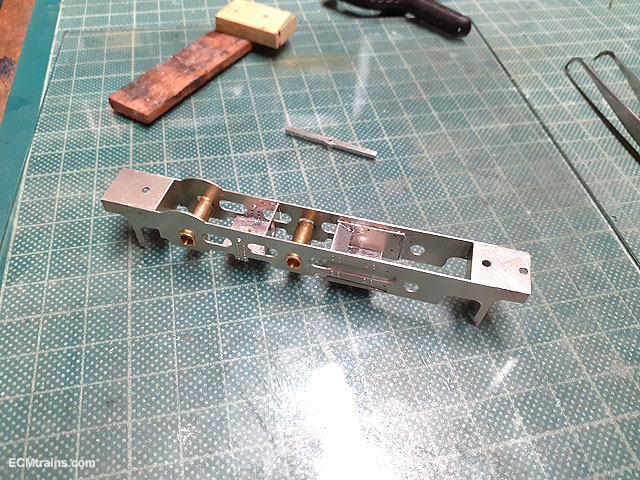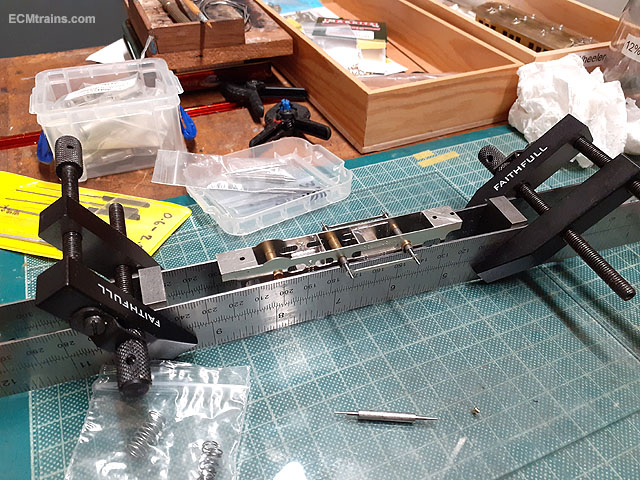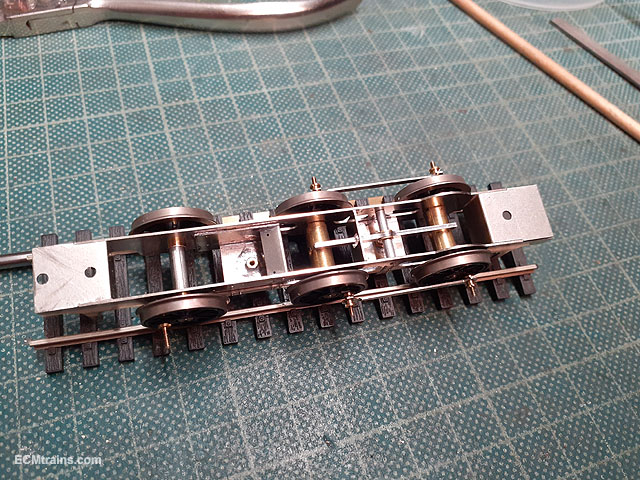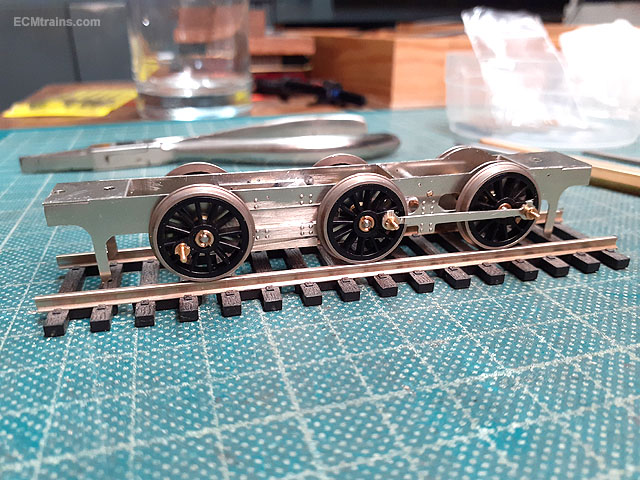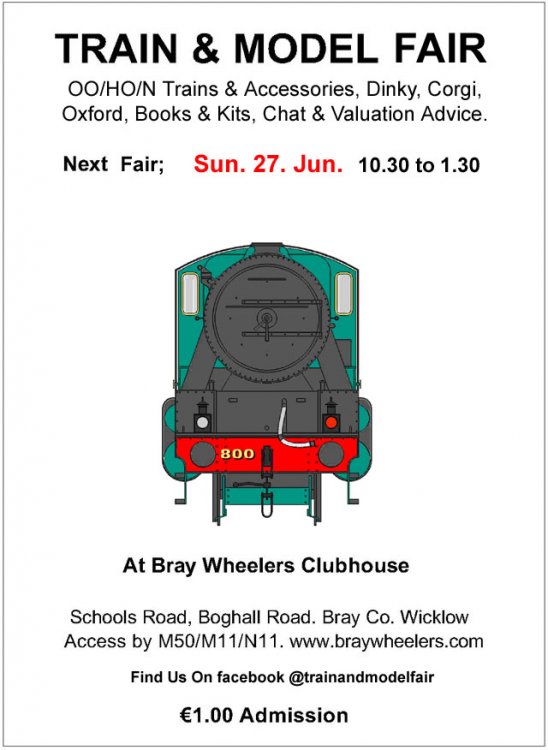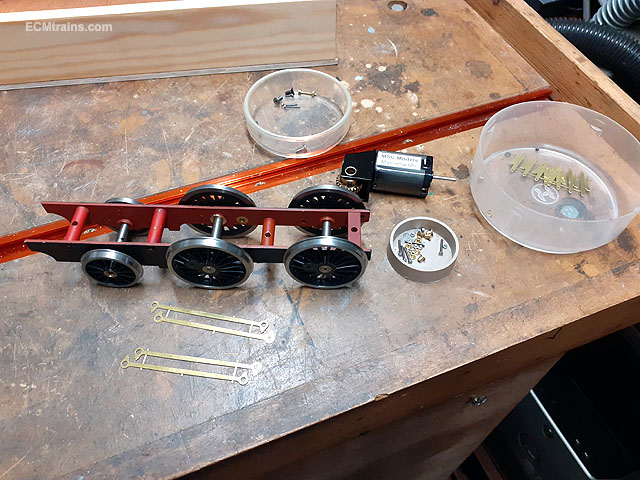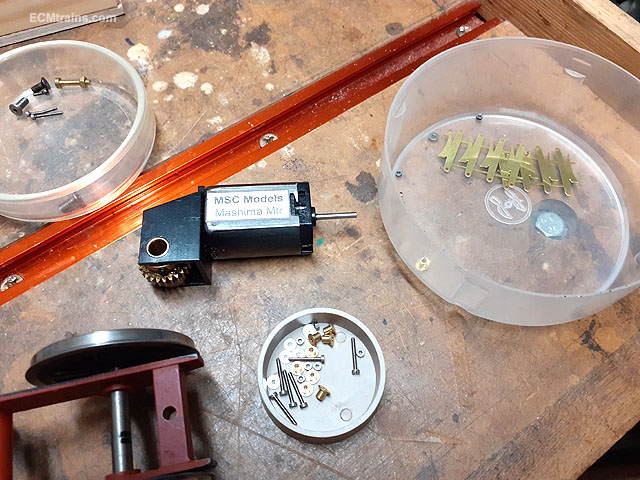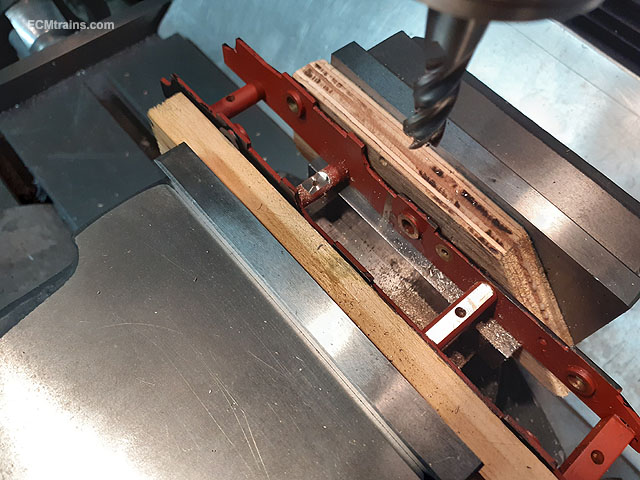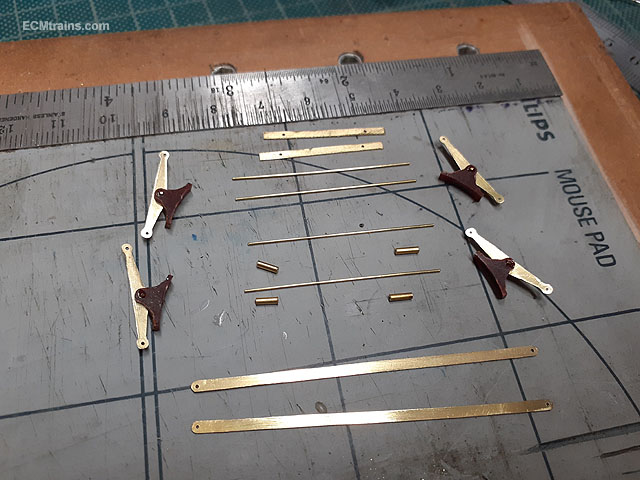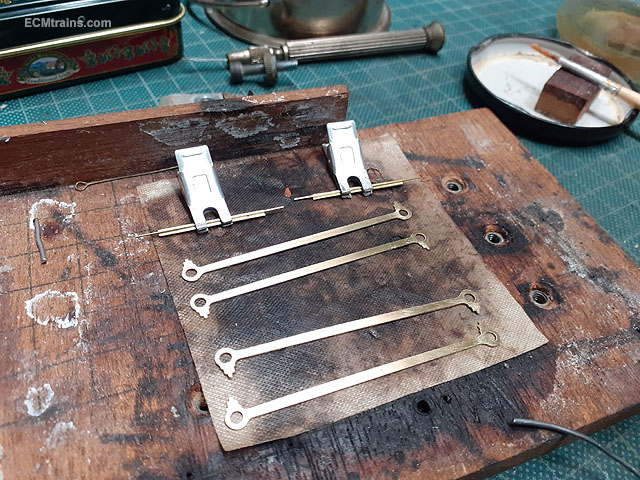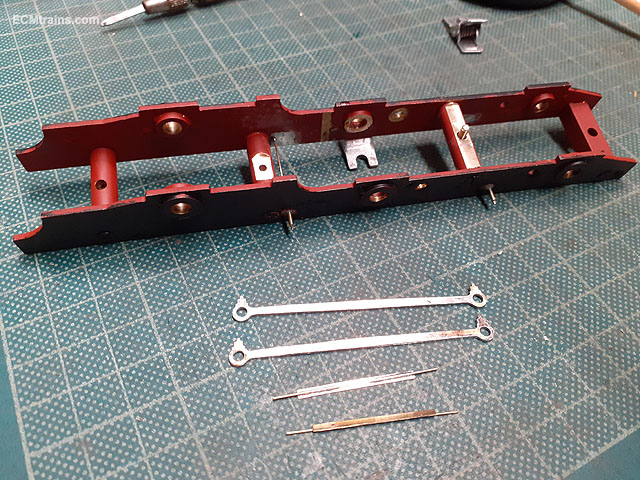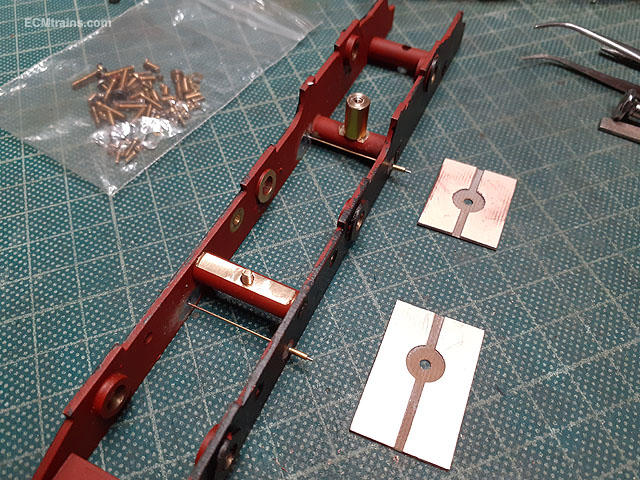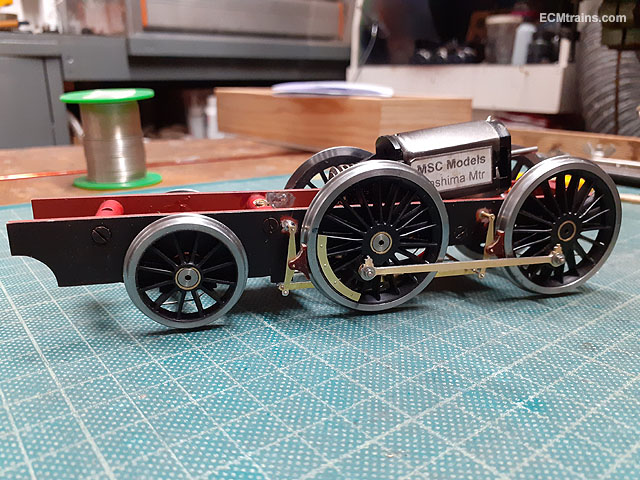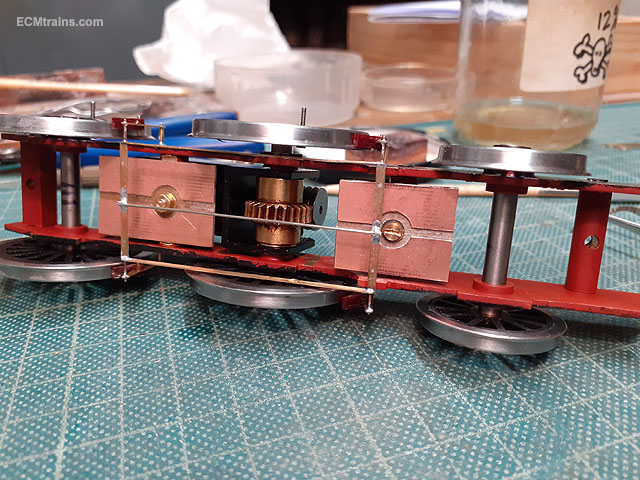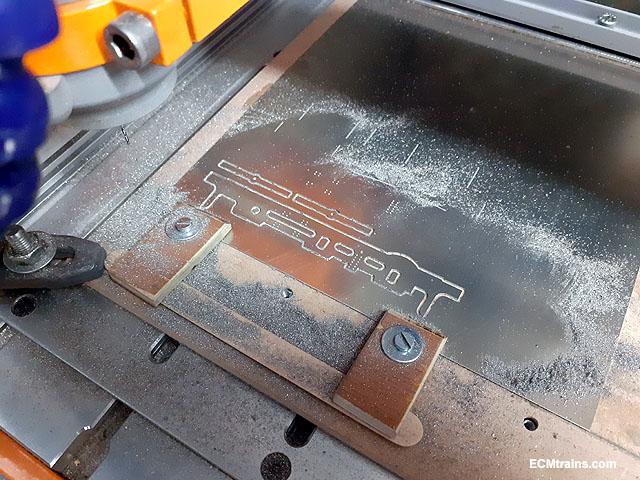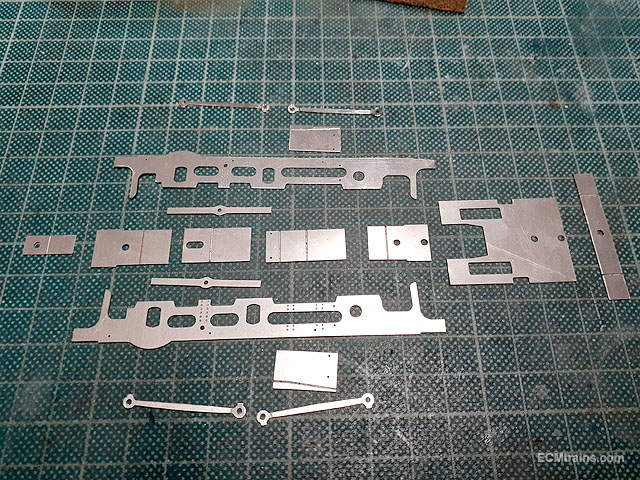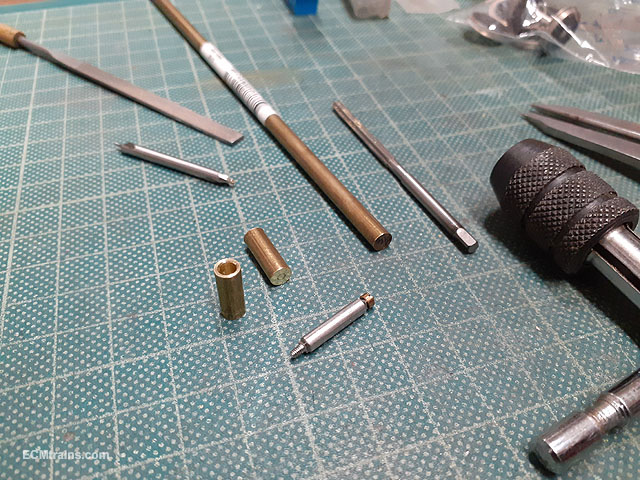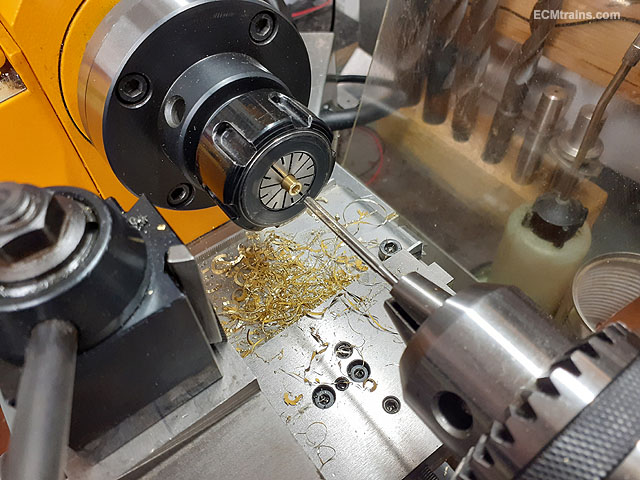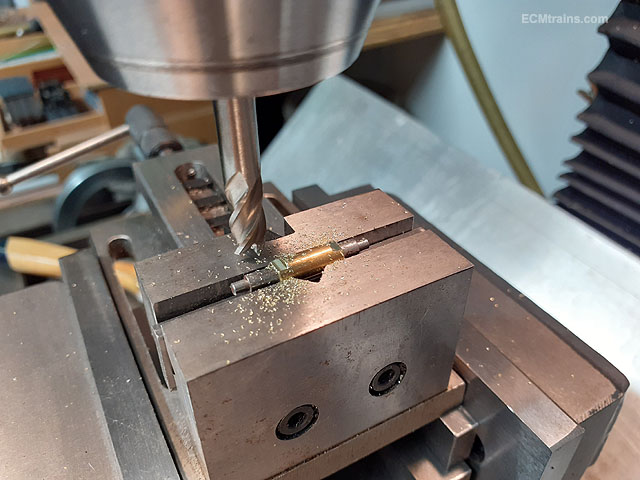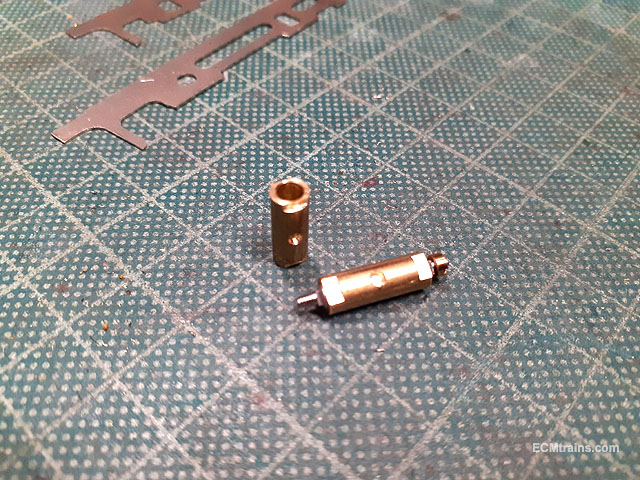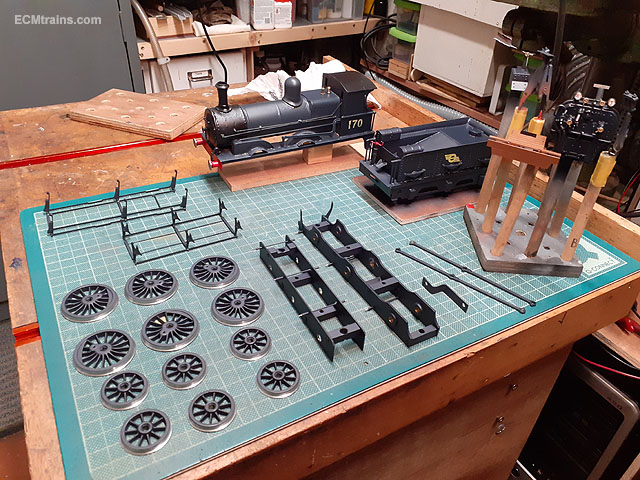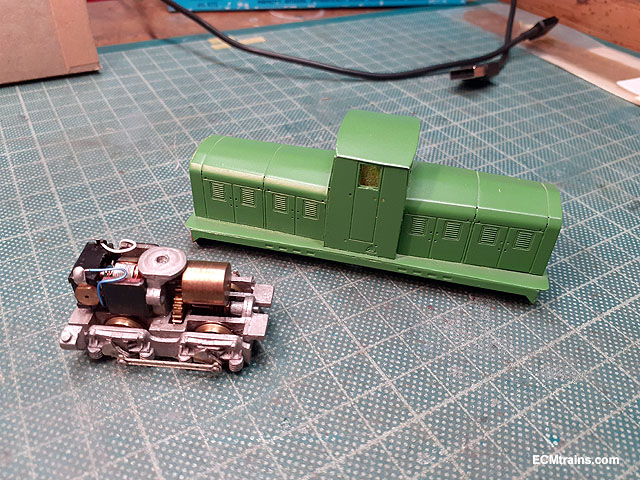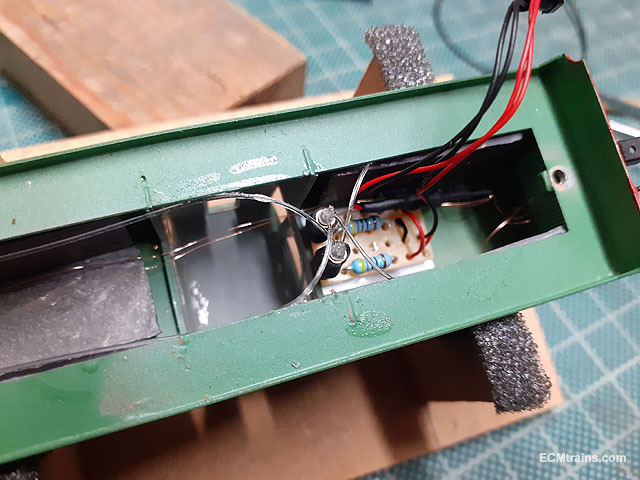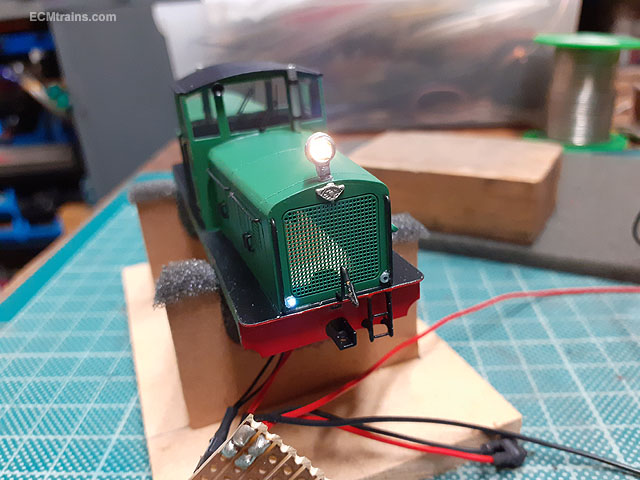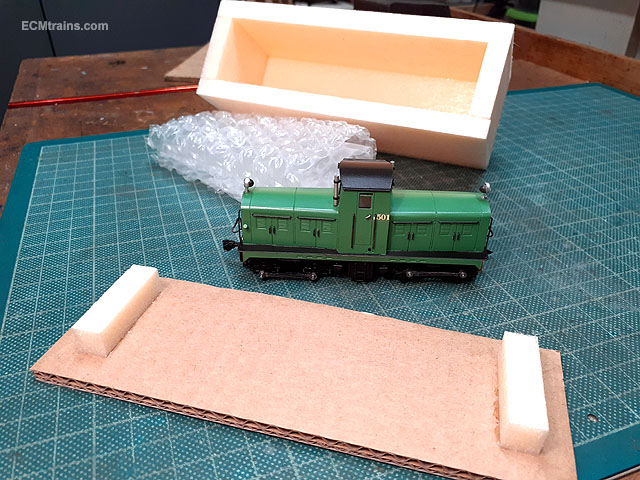-
Posts
2,718 -
Joined
-
Last visited
-
Days Won
70
Content Type
Profiles
Forums
Events
Gallery
Blogs
Store
Community Map
Everything posted by murrayec
-
If one is using HSS drill bits from the 'Microbox' that Expo and craft shops sell - the small bits are as blunt as the chuck end! Expo do replacement drill bits in packs of 10 for the small sizes and these are sharp. The tungsten carbide bits are for high speed drilling and can only be used in pillar drills or CNC machines, as said above hand use is a no, hand use is to slow and snags causing side force will break them, these work best with a 'peck' drilling action only and not constant force drilling. Candle wax- preferably paraffin wax candles is the best lube for all materials, I find. Eoin
-
-
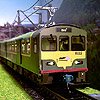
Walker Diesel Class F - ECMbuild in 4mm for OOn3
murrayec replied to murrayec's topic in Irish Models
- 136 replies
-
- 9
-

-

-
- class f
- west clare
-
(and 1 more)
Tagged with:
-
KMCE will be visiting the Fair this Sunday with his fabulous 3D printed wagons as featured on his Workbench thread, don't miss having a look at these...... https://irishrailwaymodeller.com/topic/7108-kmces-workbench/page/5/#elControls_157055_menu Looking forward to seeing these and you all that venture out on Sunday. Eoin
-
Amazing Ken, I cant wait to do my O ones, but will have to as not enough time- I got the printer in March and still haven't used it!! Eoin
-
@declan64 By the special agreement the North is kind of still in the EU, so VAT is charged when selling & buying across the Irish/North border;- https://www.revenue.ie/en/customs-traders-and-agents/brexit/information-for-businesses-trading-with-ni/vat-trade-with-ni-after-transition/index.aspx It's down to ebay to ensure VAT is charged if the seller is not registered for VAT, it's also down to ebay to return the VAT charges to Irish Revenue or do VAT offset in their returns...... Eoin
-
Yes the Guy Williams book is a must have reference for building loco models, as well as Mr Rice's book on building OO chassis and etch kits.... Eoin
-
I stuck the chassis together this evening. A bit of riveting to the frames first. The fire box sides have been soldered to the inside of the frames, the frame spacers folded, soldered, and nutted- 12BA nuts to hold the pick-up system on the underside. Also the laminated compensation beam was soldered, two 1.2mm ID aluminium tubes cut, which will be used to centre the beam on the 1.2mm brass pin soldered accross the frames. The back and front frame spacers are soldered onto the alternative frames, these have tab n recess fitting which will keep the frames square.... Frames brought together, squared and clamped. The brass tube wheels bearings are now fitted after checking free movement in the frame slots. Soldered. Checking the fit of the rear axle bearings with an axle jig and the rear connecting rods- it's spot on!! Inserted the compensation beam, brass pin and aluminium tube spacers- aluminium! because the solder wont stick to it when the pin is soldered to the frames which can wick in and solder the beam to the pin- that bit has to rotate. Wheels also on and setting up for motorising...... Eoin.
-
Excellent Ken, And Snap! I have been working up the drawings for the same project in Gauge O..... Eoin
-
-
A Class G2 chassis required coupler rods, brakes, wheel weights and electrical pick-ups. On arrival, with brass etched rods and brake shoes- though I'm using my own Tufnol shoes as these insulate the wheels and one can have them right up against the tyres! After a plan of action was worked out the parts were cut- brake hangers/rods and wheel weights from .35mm brass sheet, pcb board was machined for the pick-ups and the Tufnol shoes. Milling flats on the frame spacers to provide a seat for the pick-up boards, the frames were also drilled for the mounting pins which hold the brake shoe hangers. Brake parts almost assembled. Soldering the laminate coupler rods and cross brake rods. Wheel weights epoxied on and a flat was milled on the motor axle to seat the gear wheel grub screw. A 10x6mm dia brass rod downstand was made and bolted to the front frame spacer to provide a seating/fixing for the front axle pick-up board. The pins for the brake hangers were also soldered in. A 4mm long tube is soldered on the pins to hold the hangers in position. Wheels back on, the brake gear was soldered up and the coupler rods fitted. The brakes are removable to access the wheels. .45 NS wire pick-ups were bent up and soldered to the pcb plates and all was wired up to the motor. And finally test running the completed chassis. A few tweaks are still needed on broaching out the coupler rod bearings, but it's ready to go off to it's crew for painting and fitting the body. Eoin
-
Me to! Every so often in the process when things fit one sits back and thinks 'did I really make that' These moments drives one on through the mundane repeat process for the next eureka moment! Eoin
-
Main chassis parts and the wheel bearings have been machined for the new chassis described above;- Chassis frames being machined out of .45mm nickel silver sheet. All the parts removed from the sheet and edges cleaned up. The coupling rods are in two parts and have been half cut for the overlap on the centre crankpin. The frames have been half drilled .5mm for embossing the rivets and a few .5mm holes drilled through for construction alignment pins. Also the front and rear frame spacers have tabs which fit in corresponding tab cuts in the frames which should aid construction. The two front axles run in full frame width brass bearings, cut from 4.74mm (3/16'') brass rod. The bearing rods are drilled and reamed to take the 3.1mm (1/8'') axles. Flats are milled on the sides of the bearing rods which will fit into the slots in the frames to allow up n down compensation movement and stop the bearings from rotating. There is an old 3.1mm axle in the bearing to stop the vice pressure deforming the bearing. Bearings complete with an axle test fitted. An oiling hole is drilled in the centre of the bearings and the centre axle bearing is 1.5mm shorter than the front to allow a bit of side-play for the curves! Next will be a bit of riveting, folding, fitting & soldering. Eoin
-
He could paint CIE on the side Eoin
-
I reckon it's a tension winch, for pulling fences or holding down! The fact it has wire on the drum, it's last use was most likely on a fence. A lifting winch would have gears to lighten the load on the operator, and a much larger drum to hold long cable...... Eoin
-
In the final throws of the J15 '170' rebuild;- All parts top coated, lacquered and left sit for a week to harden off. Gauges were completed and epoxied onto the backhead. All the cab bits going in. Chassis assembled and ready to run. Final assembly will happen over the weekend, some paint touch ups need to be done and it's just about complete!....... Eoin
- 21 replies
-
- 7
-

-

-

Walker Diesel Class F - ECMbuild in 4mm for OOn3
murrayec replied to murrayec's topic in Irish Models
@Colin R The kits are still available, he has;- 1. Backwoods Donegal Class 5 Kit. 2. Backwoods 6 goods wagons made up. 3. Backwoods Donegal Rail Car kit. He's watching this thread so if you express interest he will PM you about details. Eoin- 136 replies
-
- 1
-

-
- class f
- west clare
-
(and 1 more)
Tagged with:
-

Walker Diesel Class F - ECMbuild in 4mm for OOn3
murrayec replied to murrayec's topic in Irish Models
I'll contact him and come back to you. He took them back to sell them, don't know if he had a buyer? Eoin- 136 replies
-
- 1
-

-
- class f
- west clare
-
(and 1 more)
Tagged with:
-

Walker Diesel Class F - ECMbuild in 4mm for OOn3
murrayec replied to murrayec's topic in Irish Models
Sorry Colin - they were Backwoods CDR kits, with all the Walkers I stuck in Clare Eoin- 136 replies
-
- class f
- west clare
-
(and 1 more)
Tagged with:
-

Walker Diesel Class F - ECMbuild in 4mm for OOn3
murrayec replied to murrayec's topic in Irish Models
A partly built/converted C&L 4-4-0 tank locomotive also OOn3 requiring some treatment.... .... and two West Clare tank kits went back Eoin- 136 replies
-
- 4
-

-
- class f
- west clare
-
(and 1 more)
Tagged with:
-

Walker Diesel Class F - ECMbuild in 4mm for OOn3
murrayec replied to murrayec's topic in Irish Models
No. 2 sooner than I thought! These parts arrived in at the Train & Model Fair this morning...... ...... here we go again! Eoin- 136 replies
-
- 4
-

-

-
- class f
- west clare
-
(and 1 more)
Tagged with:
-

Walker Diesel Class F - ECMbuild in 4mm for OOn3
murrayec replied to murrayec's topic in Irish Models
After several hours tweaking and running- the loco started to run OK in both directions, so the final bits were installed- the lights;- Fibre optics for the marker lights and mini led for the headlamps. A bit tight for space in there so the leds were done by soldering the resistors in line and not using a board like the marker light system. The chassis wires take up the remainder of the space! Lights up. The other marker light is the red rear light which has a bit of red painted on the end of the fibre. The loco is complete. And the boxing photo. This project was a very good exercise in building a scratch chassis and scratch motor drive for the smaller scales, a few things I would do differently if I have a go at another one ....... not for a while! Eoin- 136 replies
-
- 15
-

-

-
- class f
- west clare
-
(and 1 more)
Tagged with:
-
Love the bird shite on the cills Eoin
.png.c363cdf5c3fb7955cd92a55eb6dbbae0.png)

